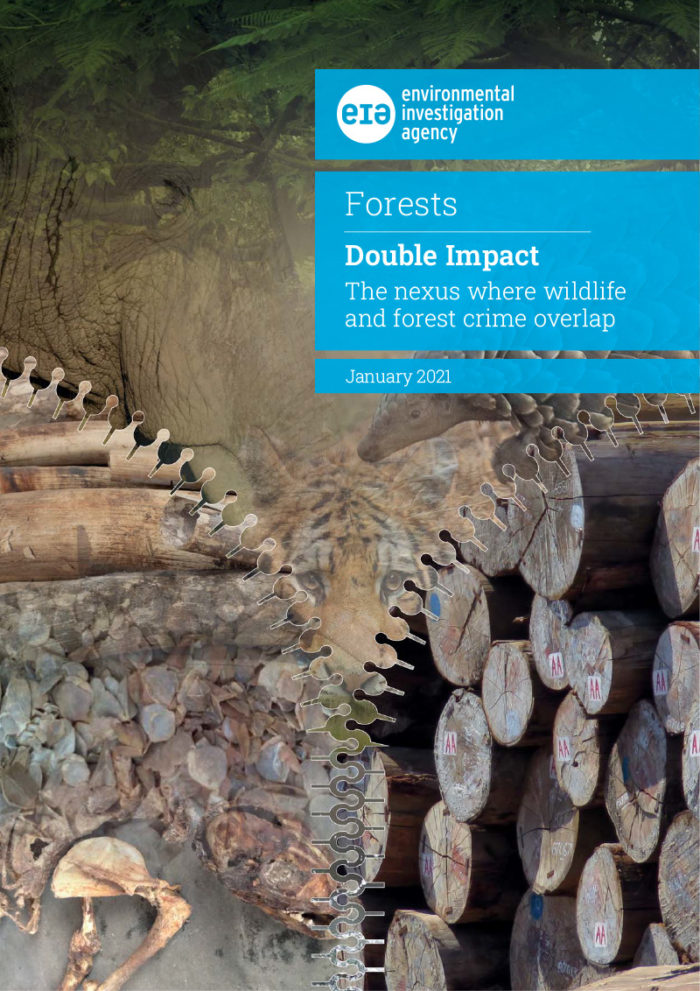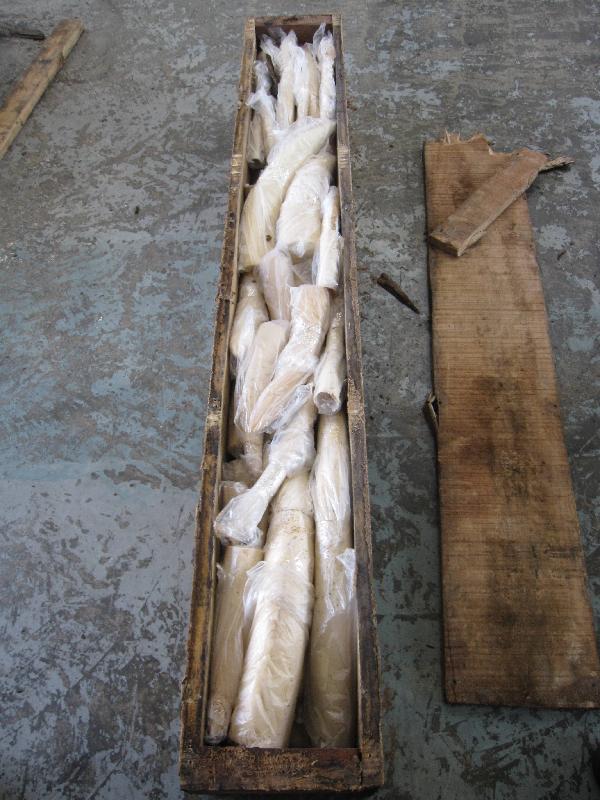New research reveals the international hotspots where wildlife and forest crimes overlap
To tackle environmental criminals more effectively, it’s vital to understand how they operate – and new EIA research has revealed major crossovers between wildlife and forest crime.
Our Forests and Wildlife campaigners have conducted a major review of the extensive data gathered in the field and via research to examine the relationship between the different crime streams – the ‘nexus’ where they cross over.
 The findings are highlighted in the new report Double Impact: The nexus where wildlife and forest crime overlap.
The findings are highlighted in the new report Double Impact: The nexus where wildlife and forest crime overlap.
Senior Campaigner James Toone, who oversaw the project, said: “Following on from the London Conference on the Illegal Wildlife Trade in 2018, the UK Government asked EIA to consider if there were missed opportunities in addressing forest crime that may have relevance to efforts to tackle the illegal wildlife trade.
“The value of this work lies in EIA’s intelligence-gathering and its unique understanding of wildlife and forest crime over more than three decades.”
Our research revealed that in Africa and Asia there is a significant convergence between illegal wildlife and illegal timber ’hotspots‘, transportation routes, processing hubs and key ports.
And our analysis further points to a geographic convergence at the local level, with specific towns and cities acting as hubs for both crime types in these hotspot countries.
Toone added: “Put simply, transnational organised crime groups use the same networks of corruption from source to destination to facilitate the movement of both illegal wildlife and forest crime products.”
There is a significant overlap in the way illegal wildlife and illegal timber is traded and shipped – traders in Africa and Asia deal in both, using timber for smuggling illegal wildlife shipments both within Africa and from Africa to Asia. Traffickers may send shipments of illegal wildlife products within shipments of legal timber, but also send products within shipments of illegal timber.
Asian wildlife trafficking networks have actually set up timber companies to act as false fronts for their wildlife trafficking activities in Africa.
Based on our findings, we maintain it is essential for the two crime types to be considered together when creating new national or international legislation to tackle them.
Accordingly, we urge the UK Government, international organisations and the governments of nexus hotspot countries to:
- recognise that a nexus between wildlife and forest crimes exists and support those countries affected to address it as it manifests;
- target nexus hotspots, using the Wildlife and Forest Crime Toolkit produced by the International Consortium on Combating Wildlife Crime, to comprehensively assess weaknesses and put in place action plans, which are made public and robustly monitored;
- ensure that where countries can report on or be assessed against progress on environmental crimes and associated enablers such as corruption and money-laundering, they do so;
- take action to address corruption in ports.




